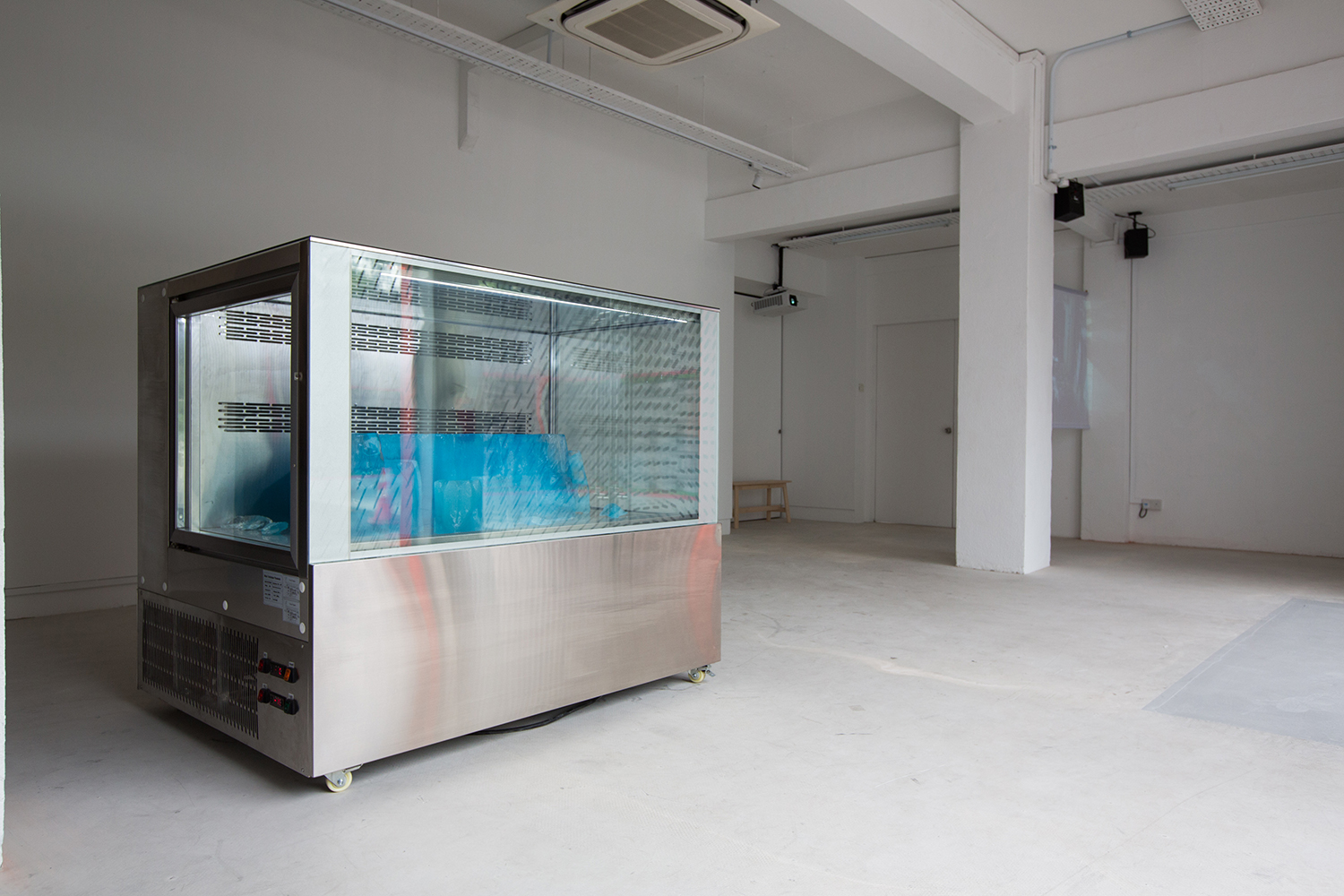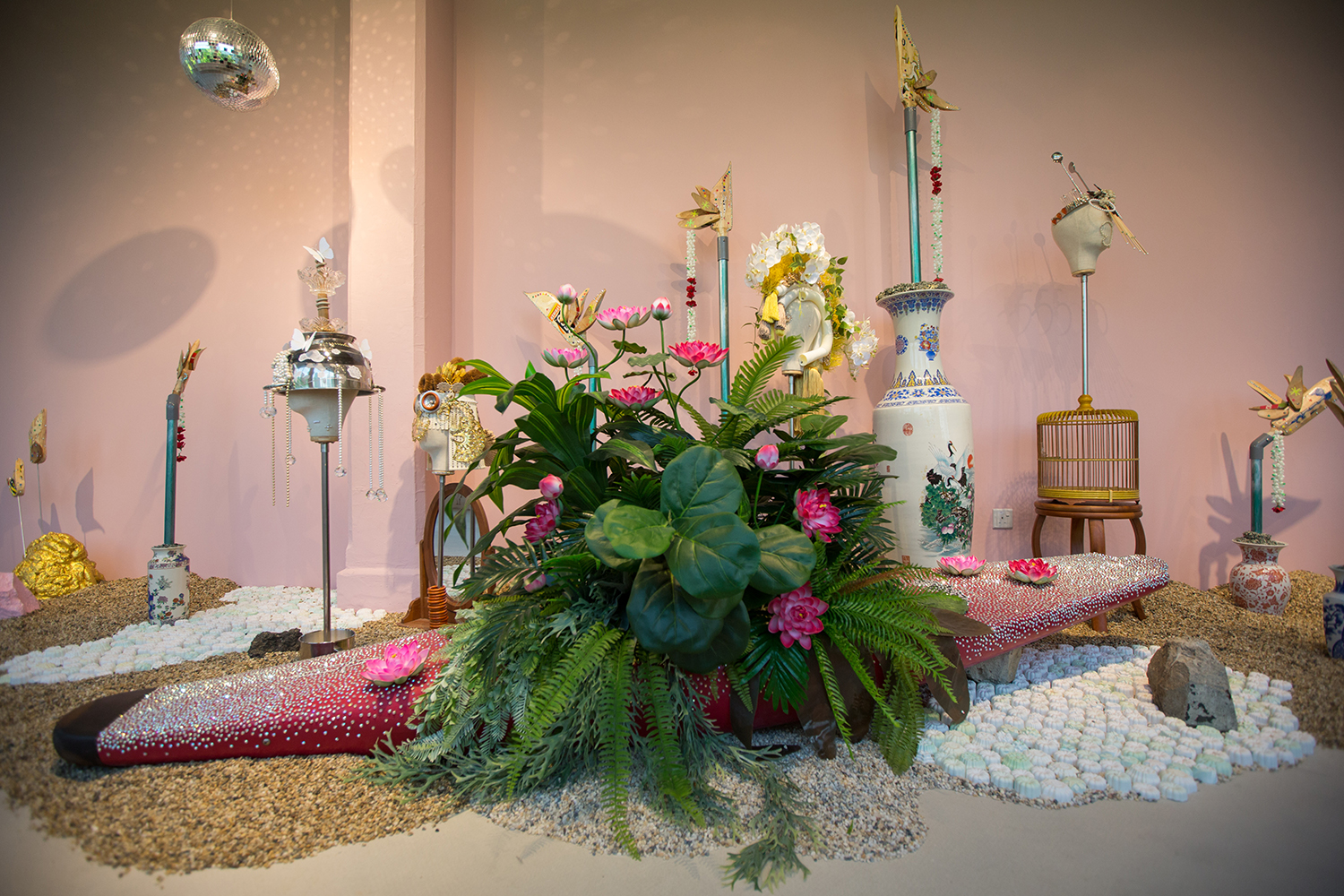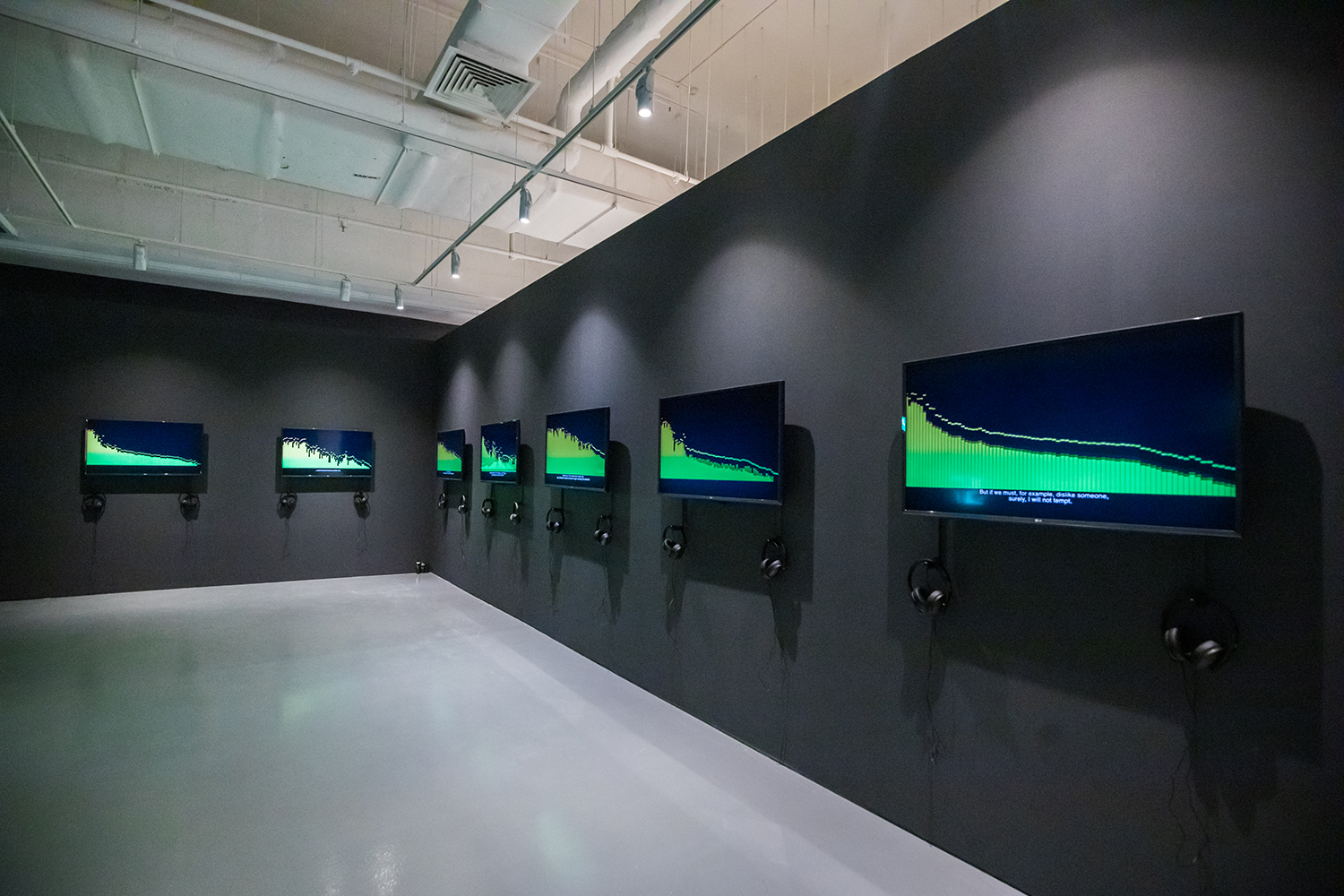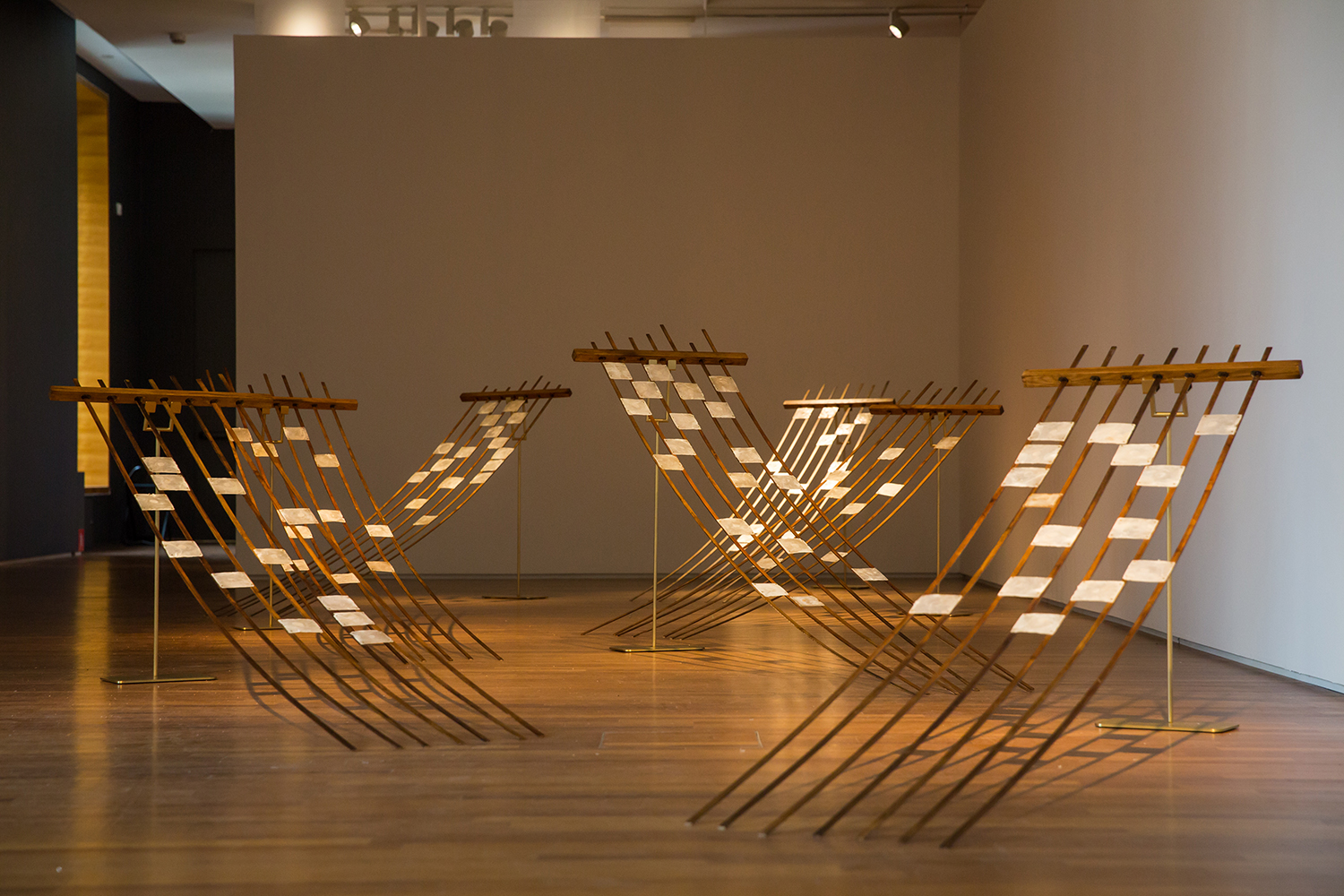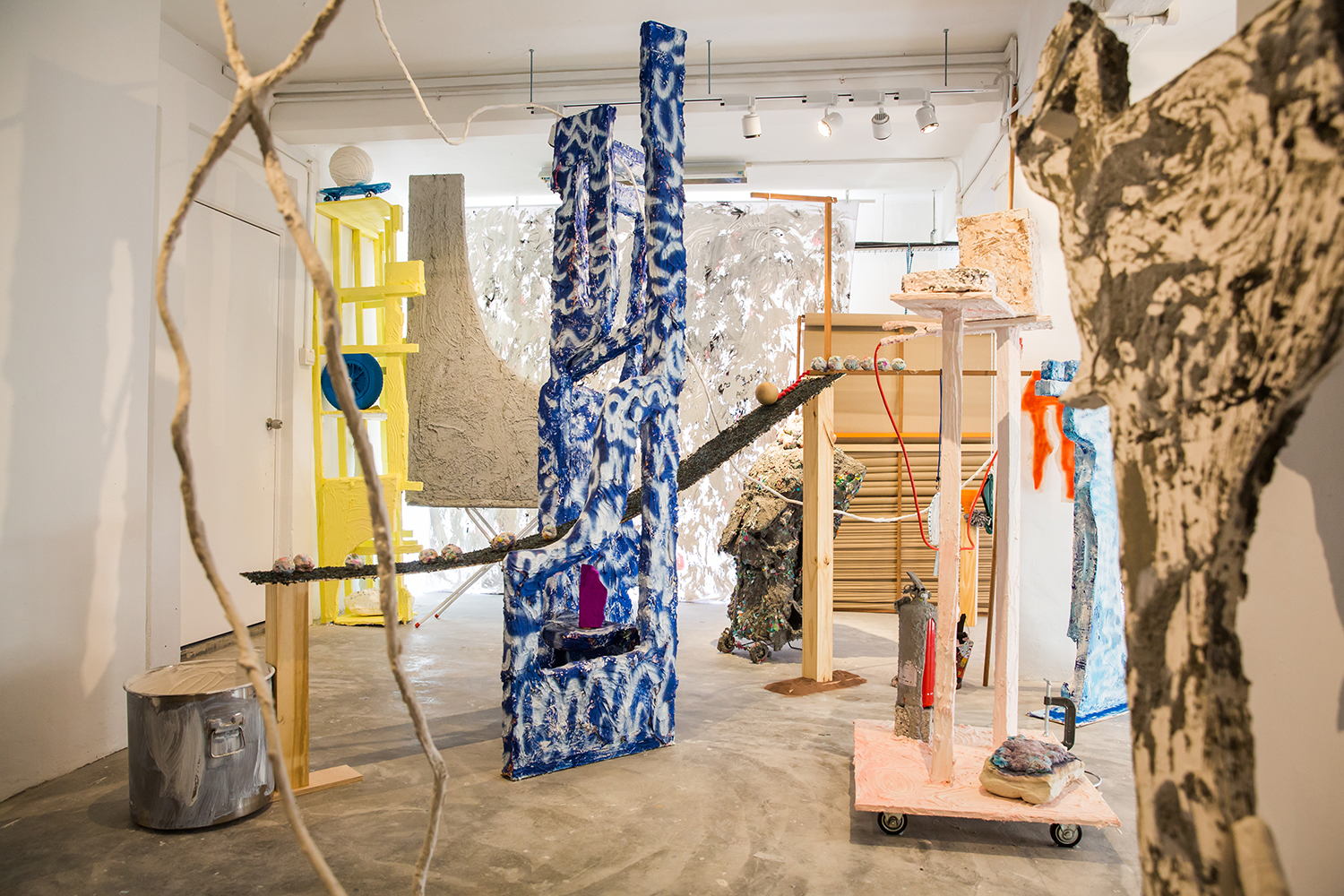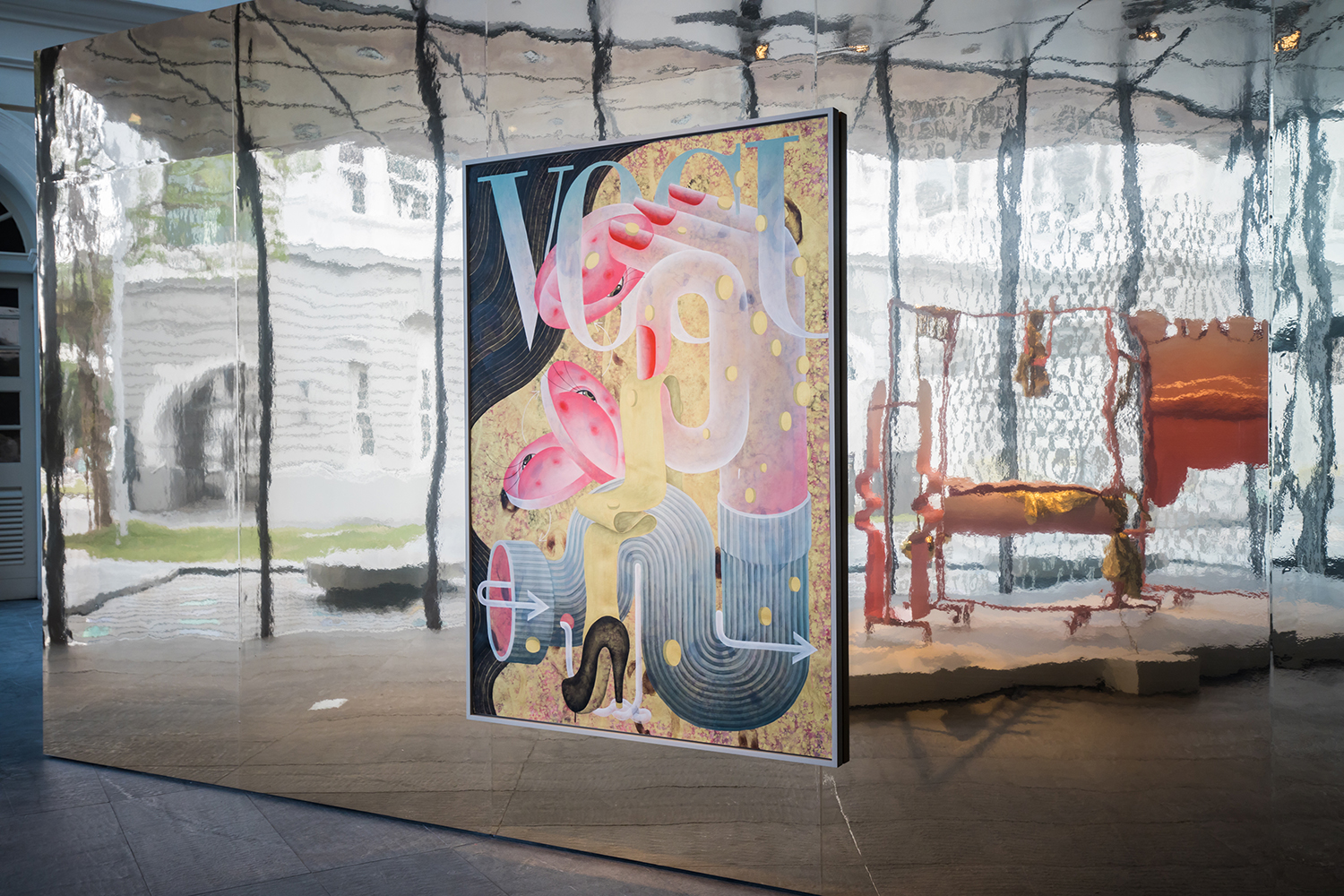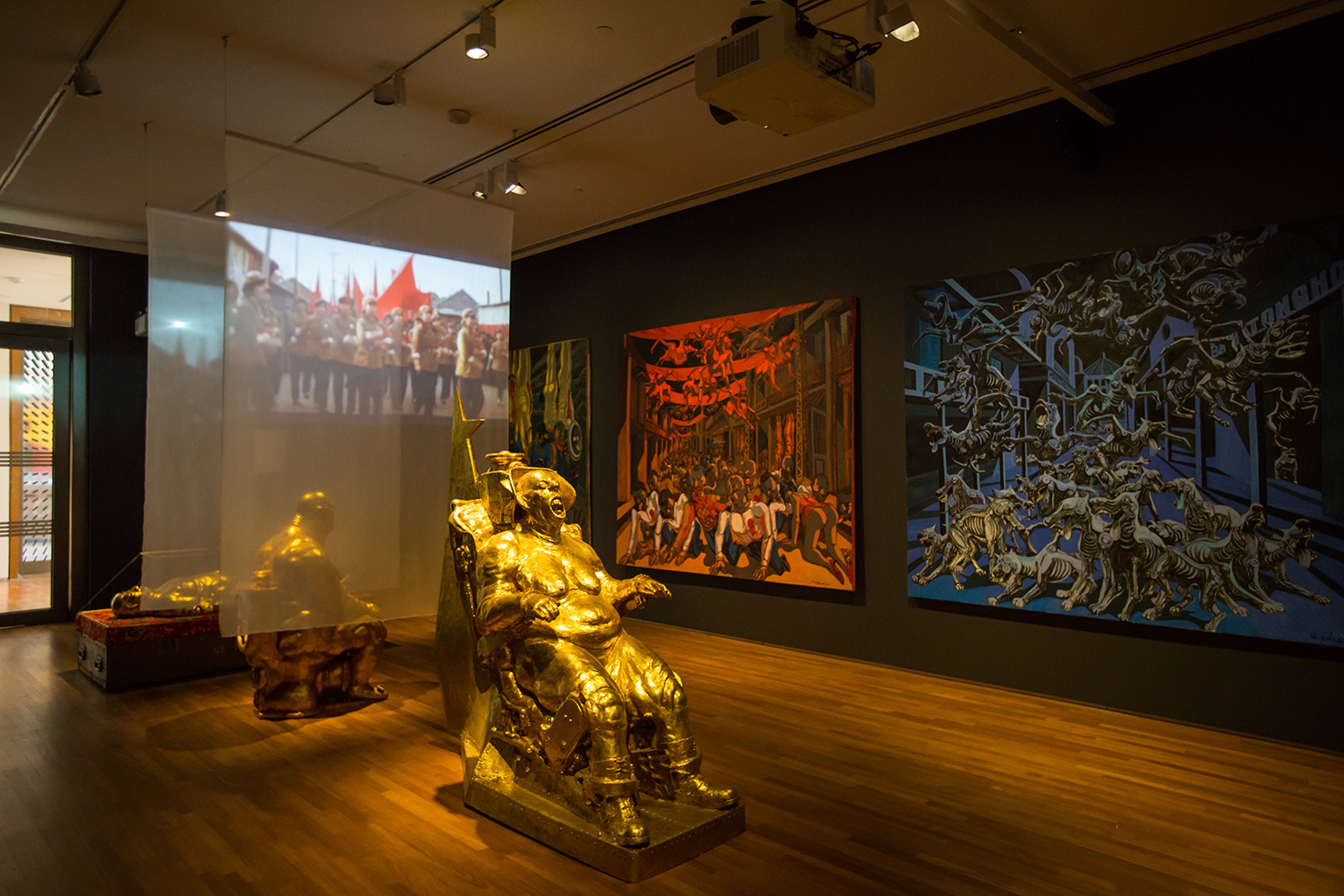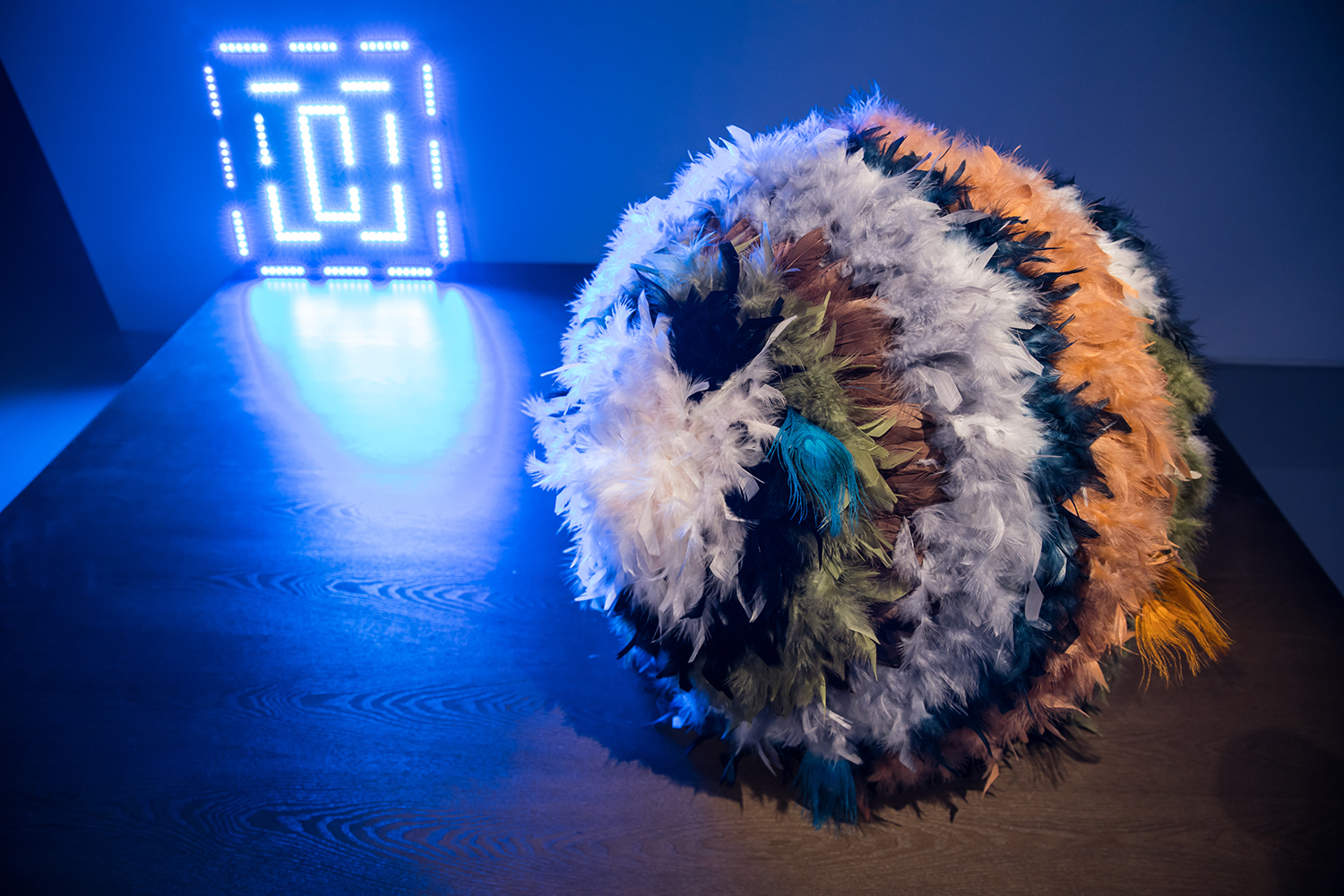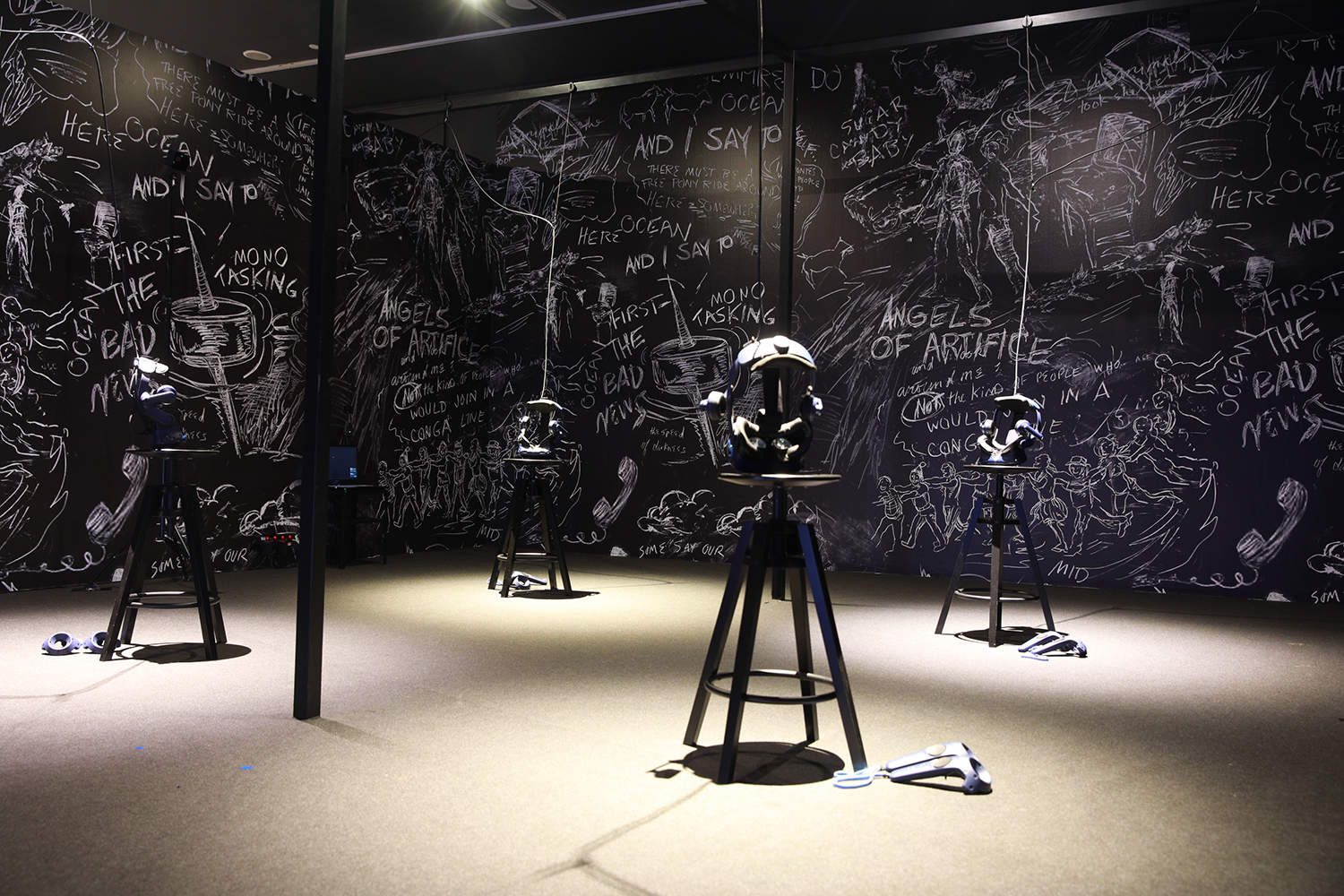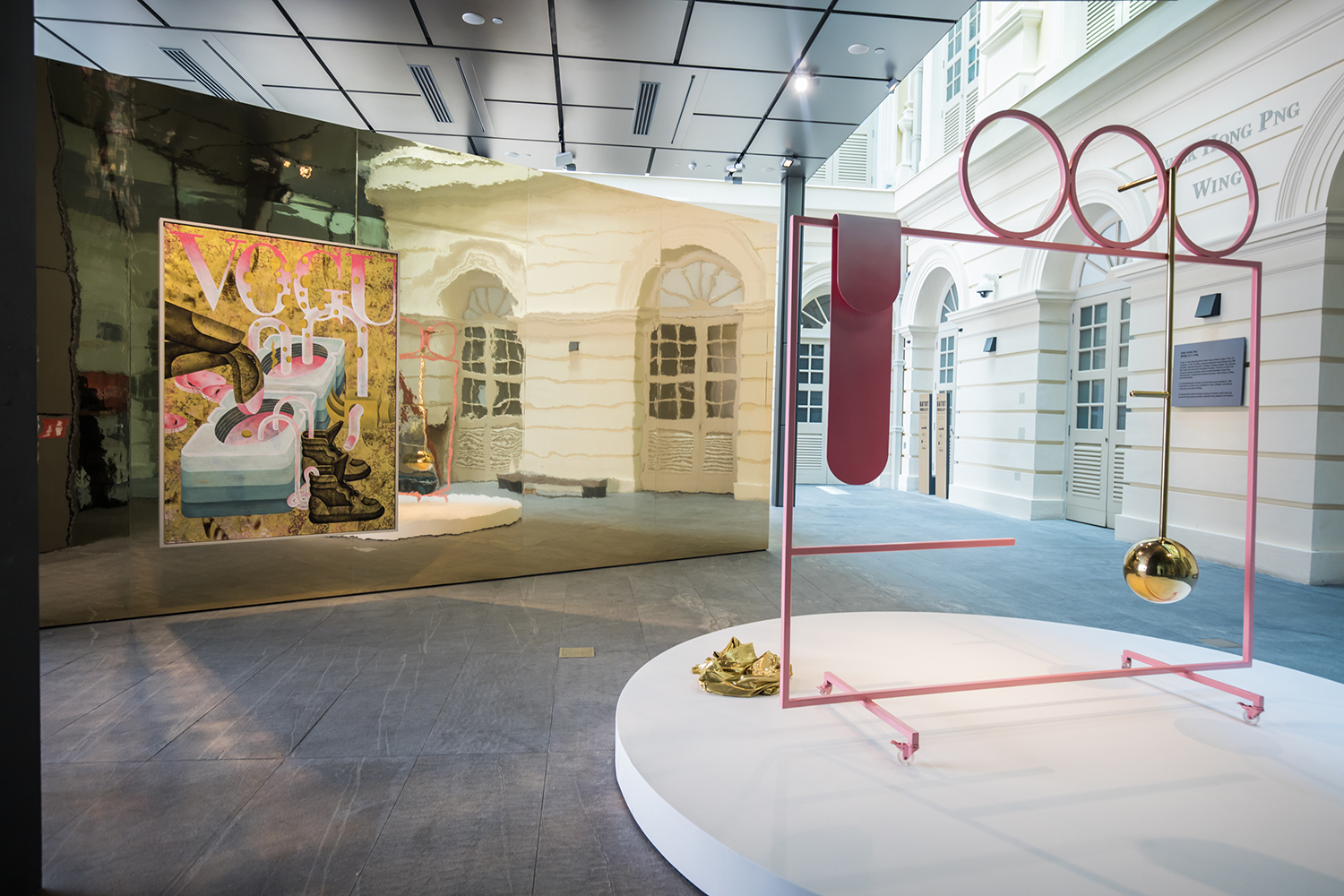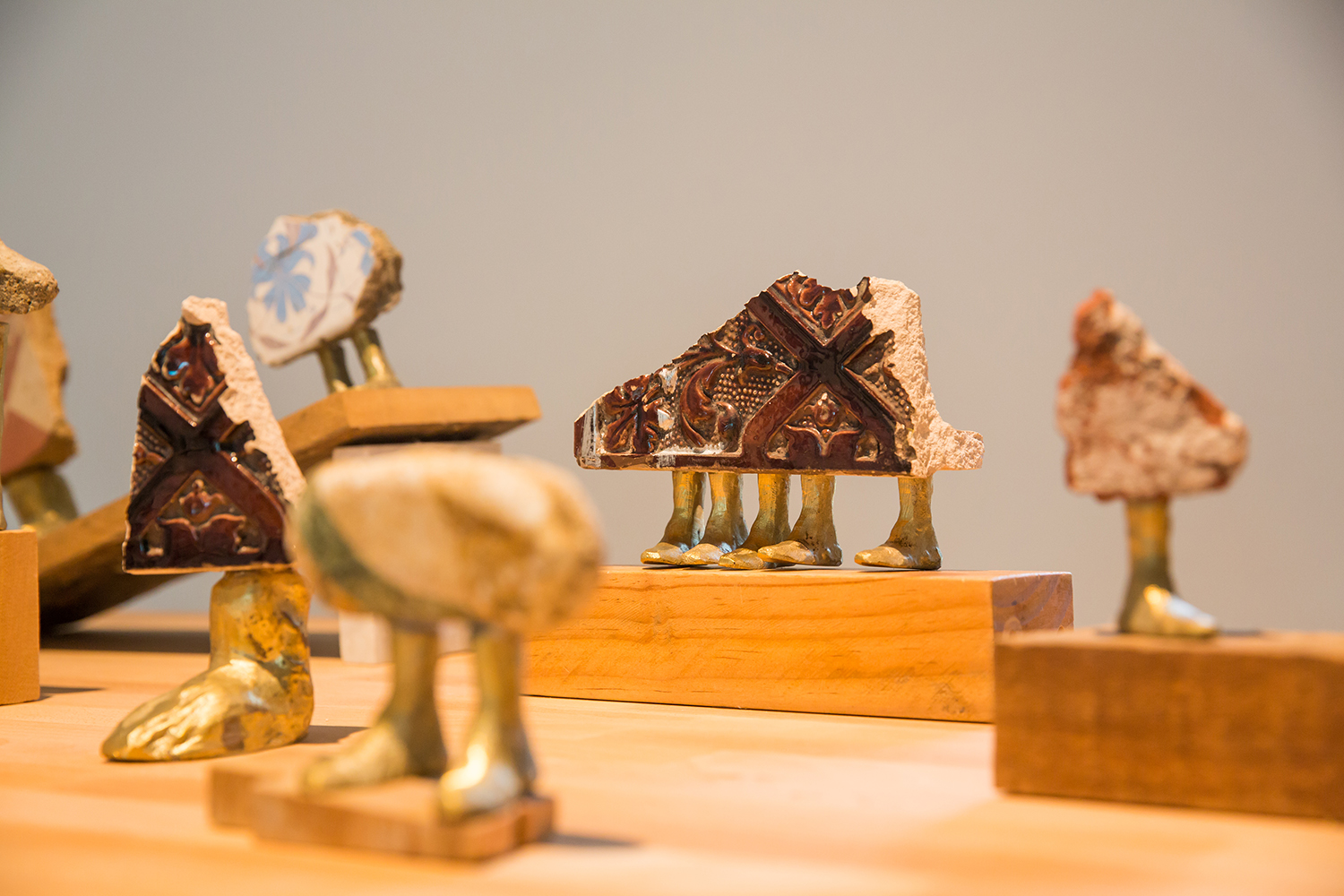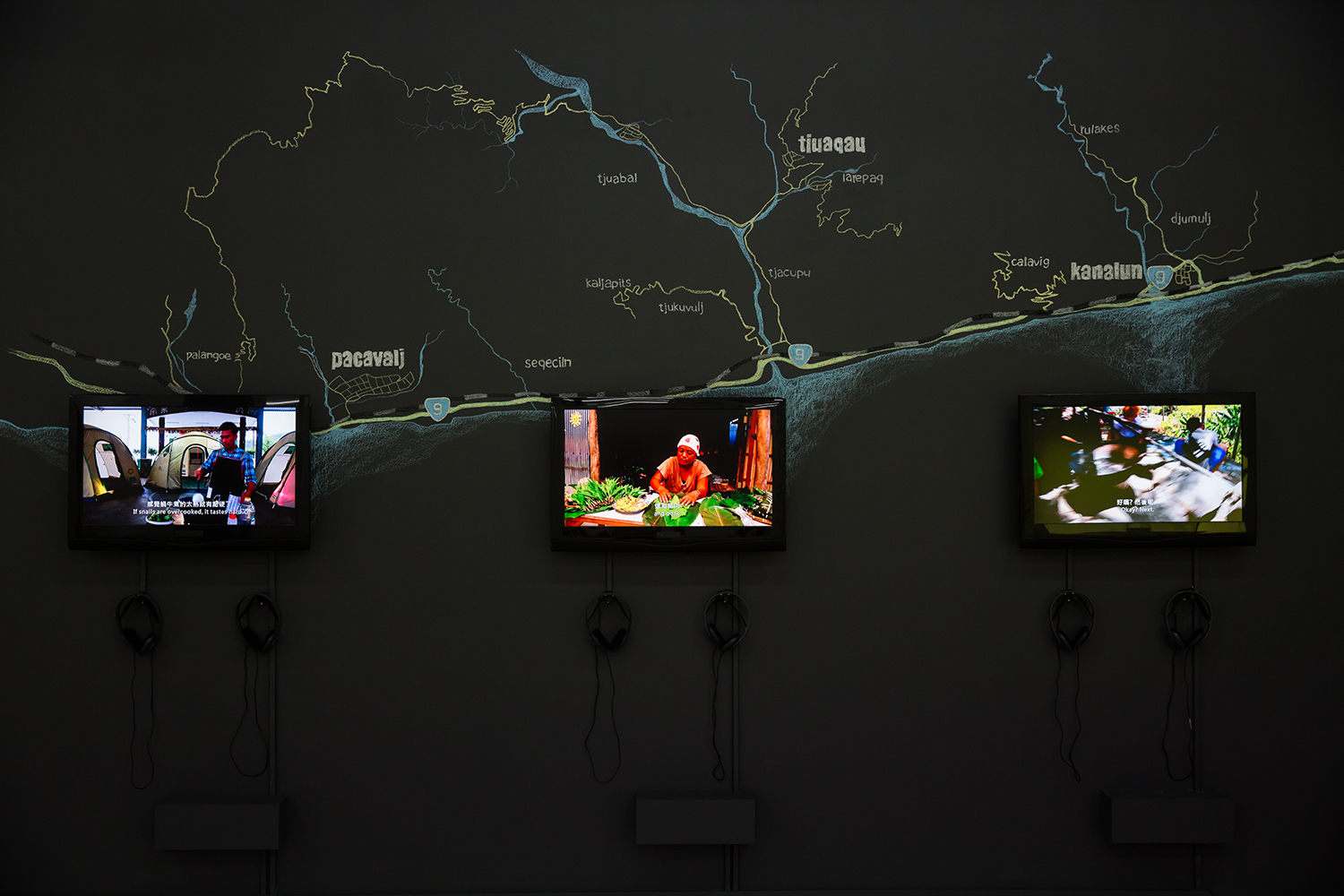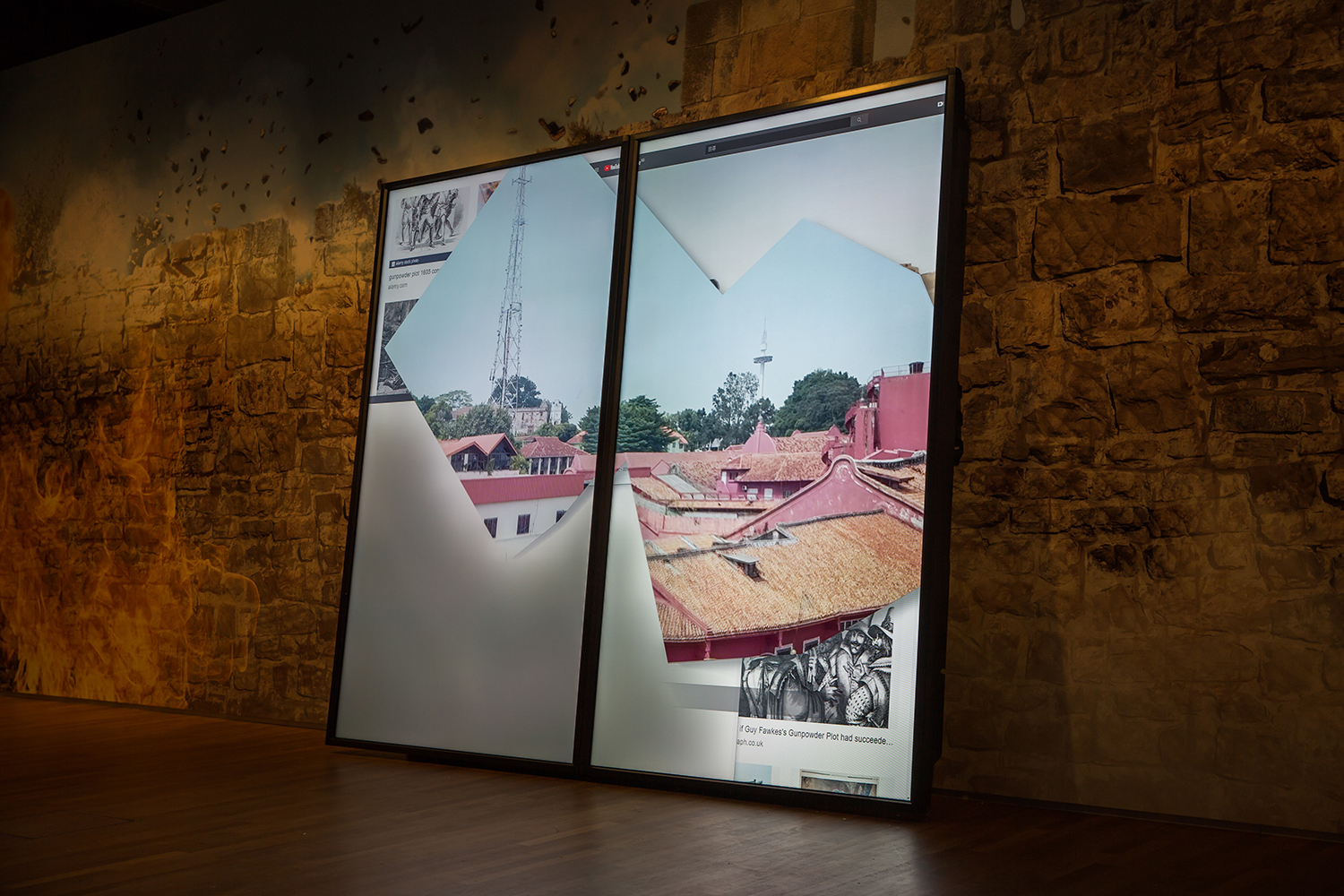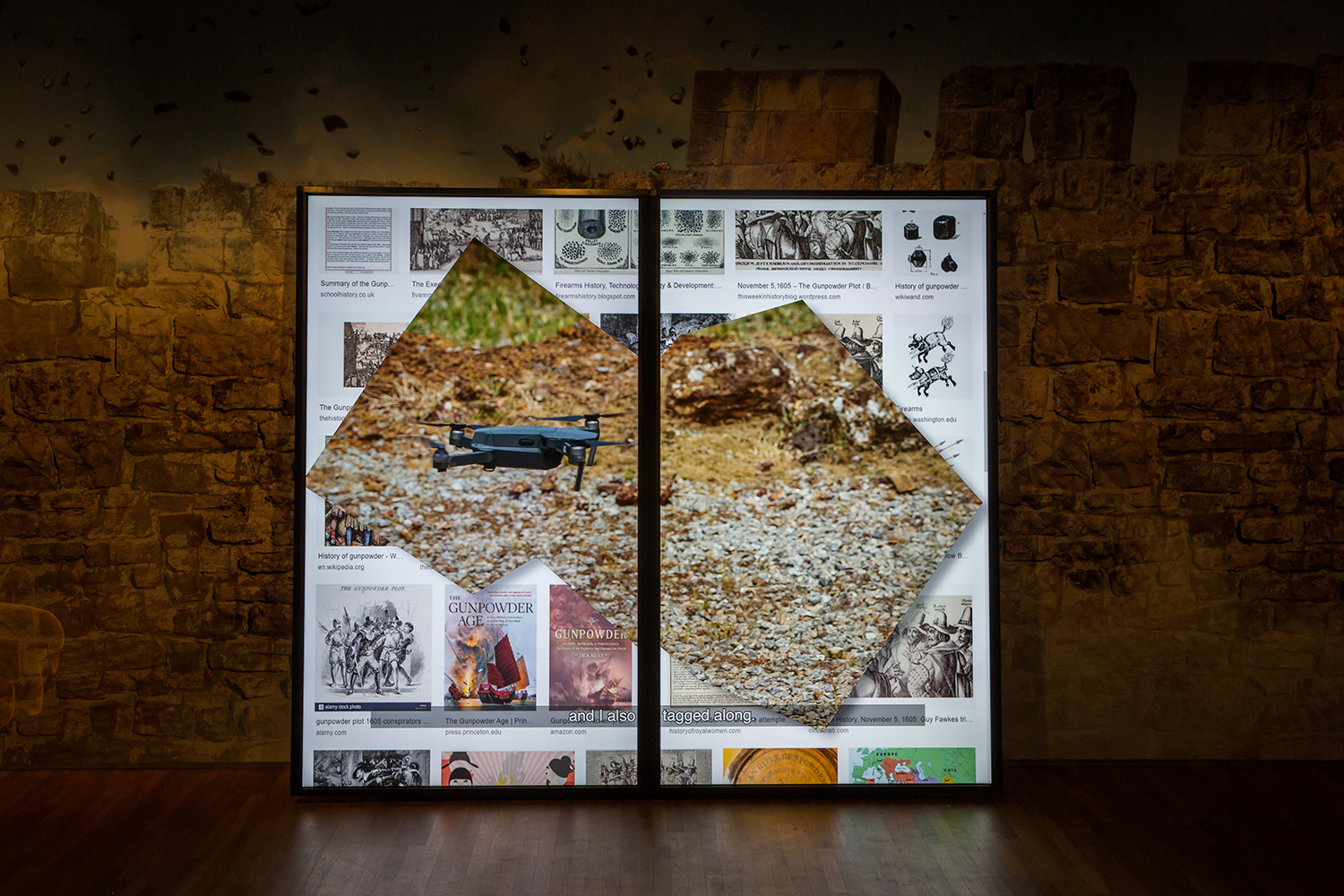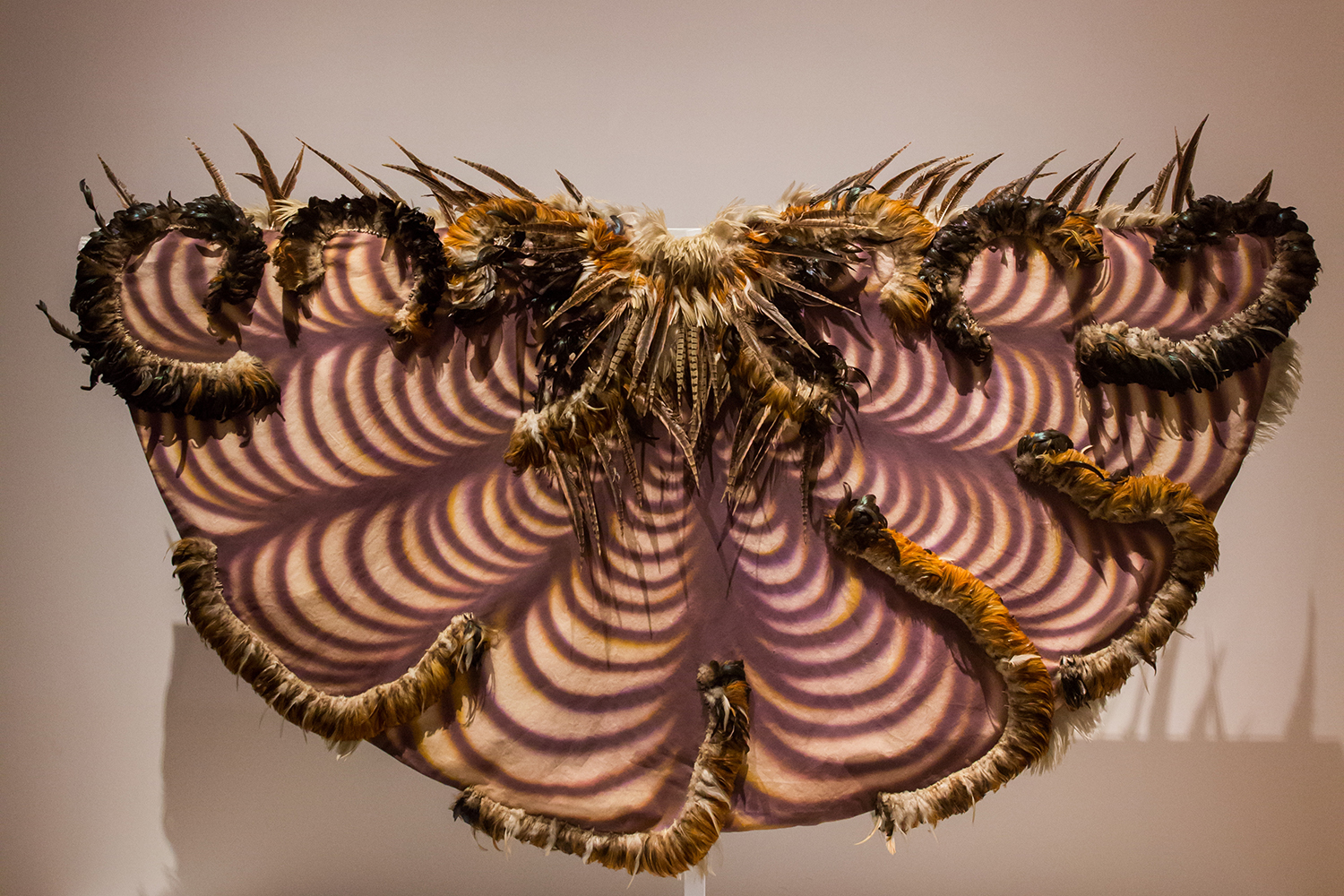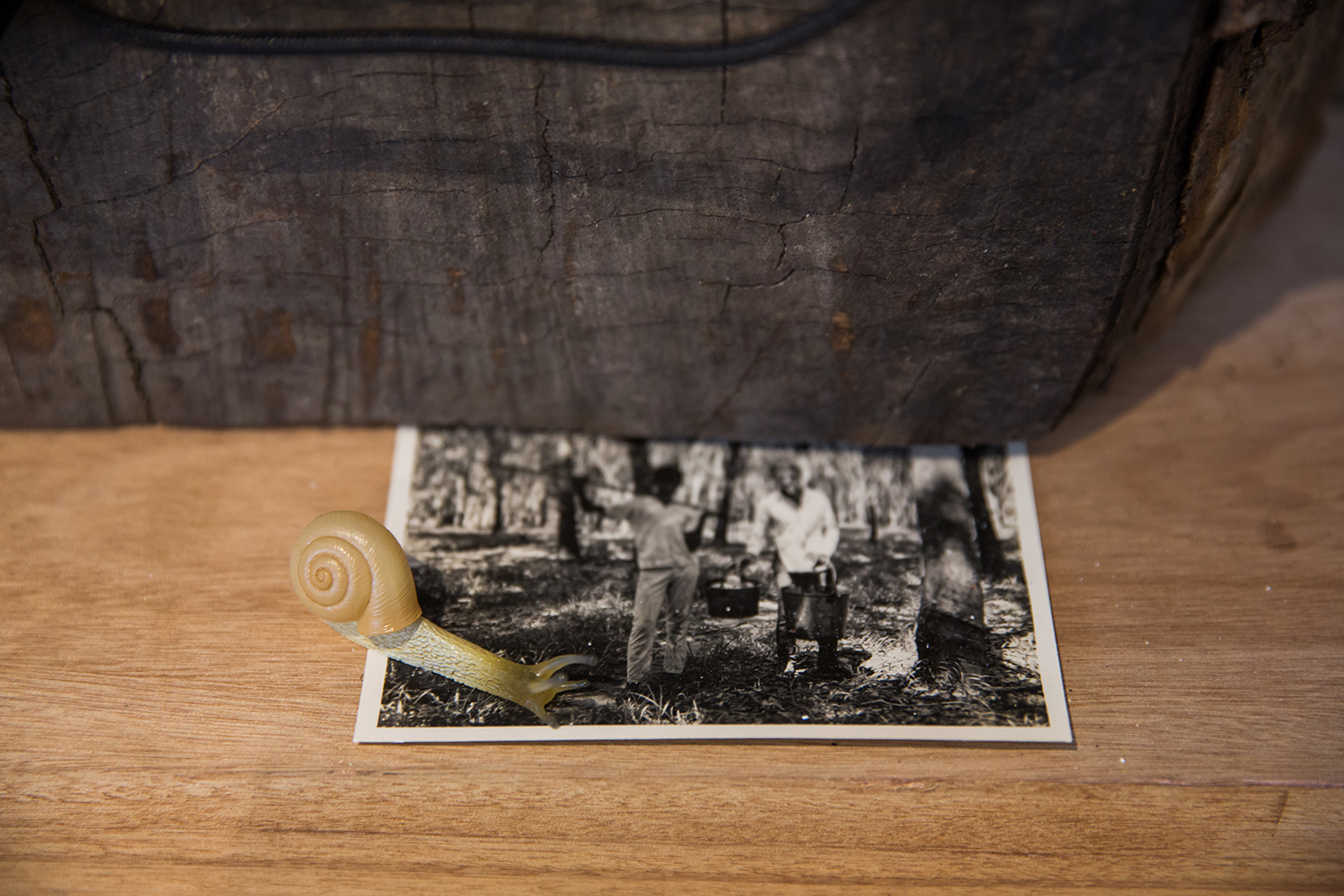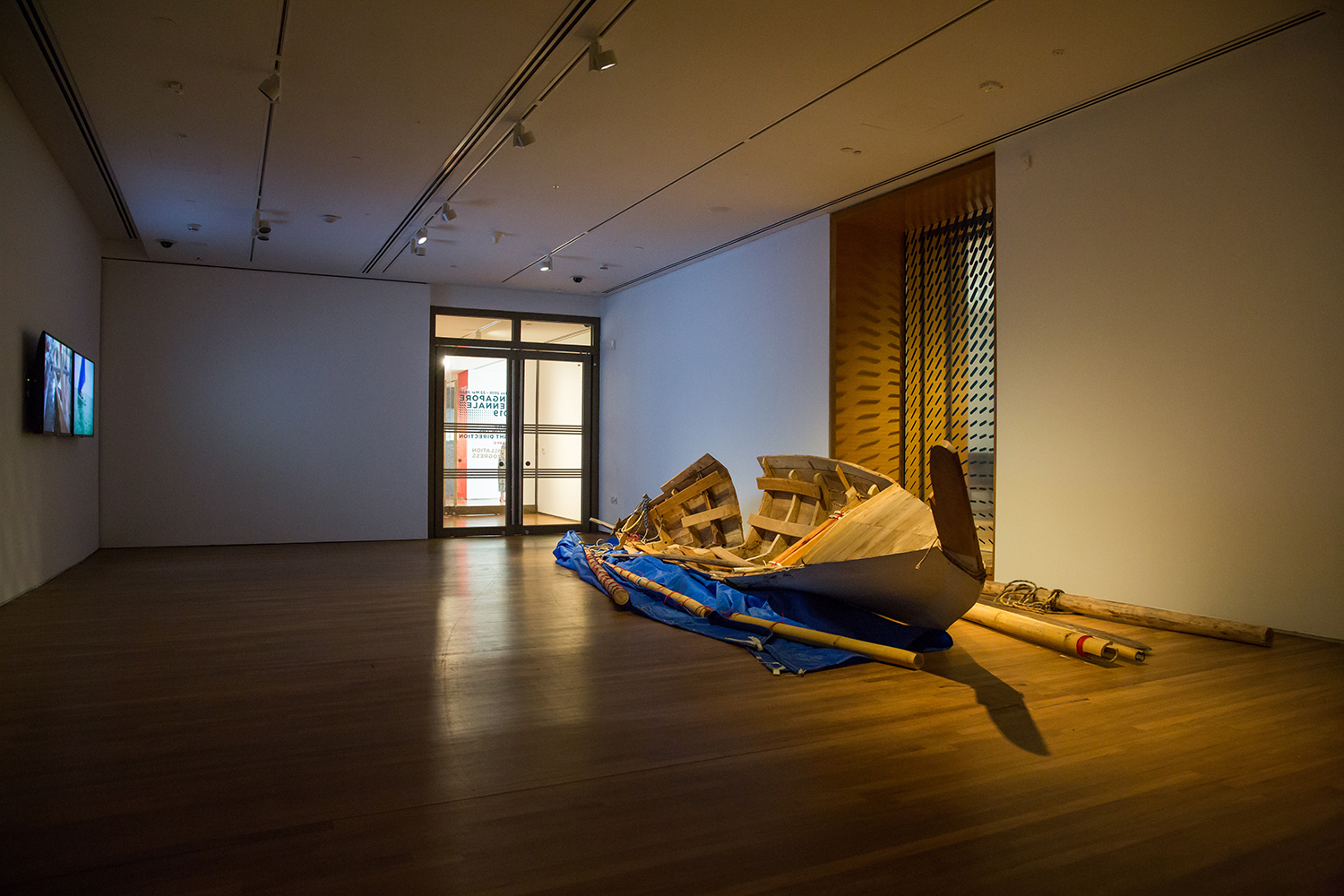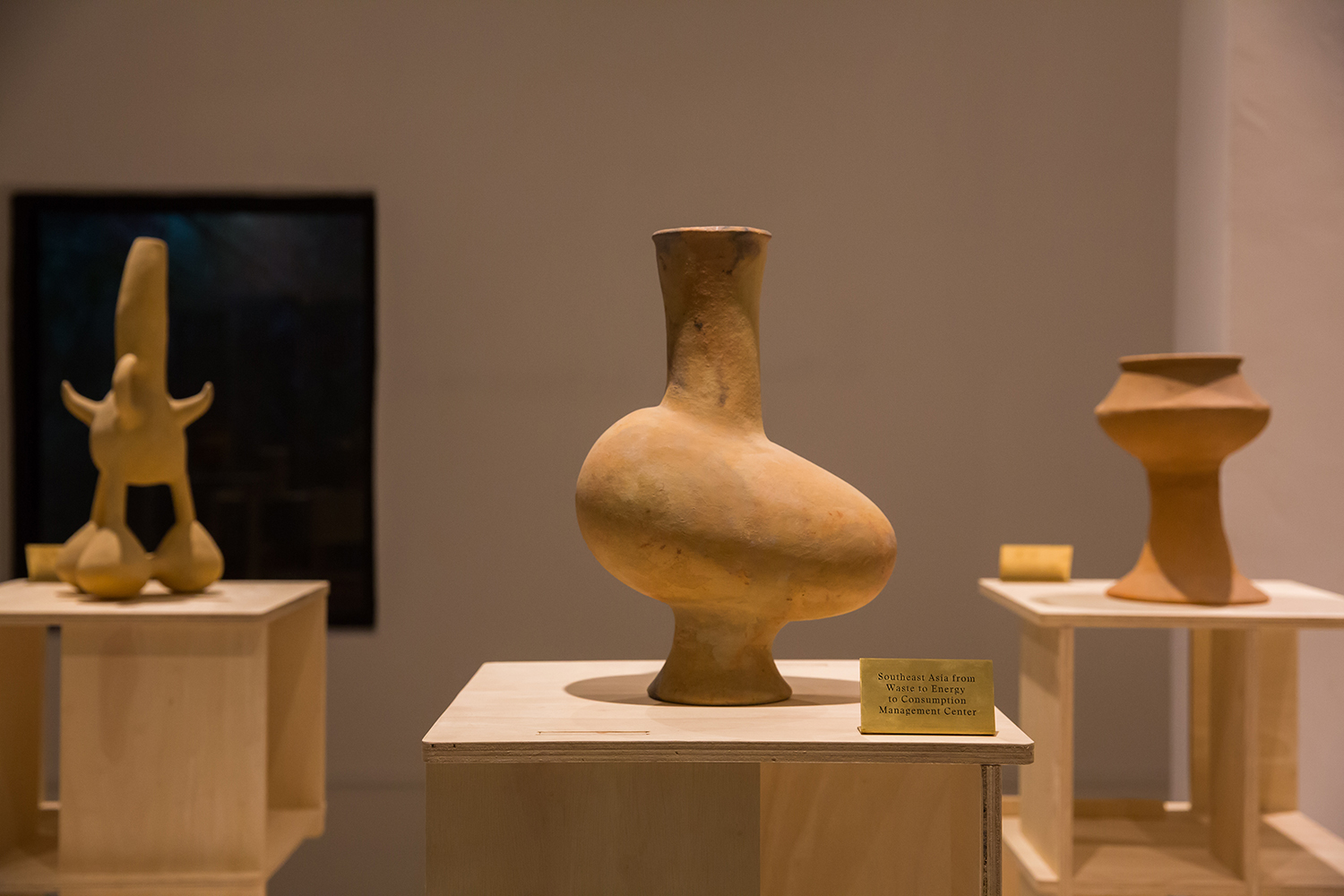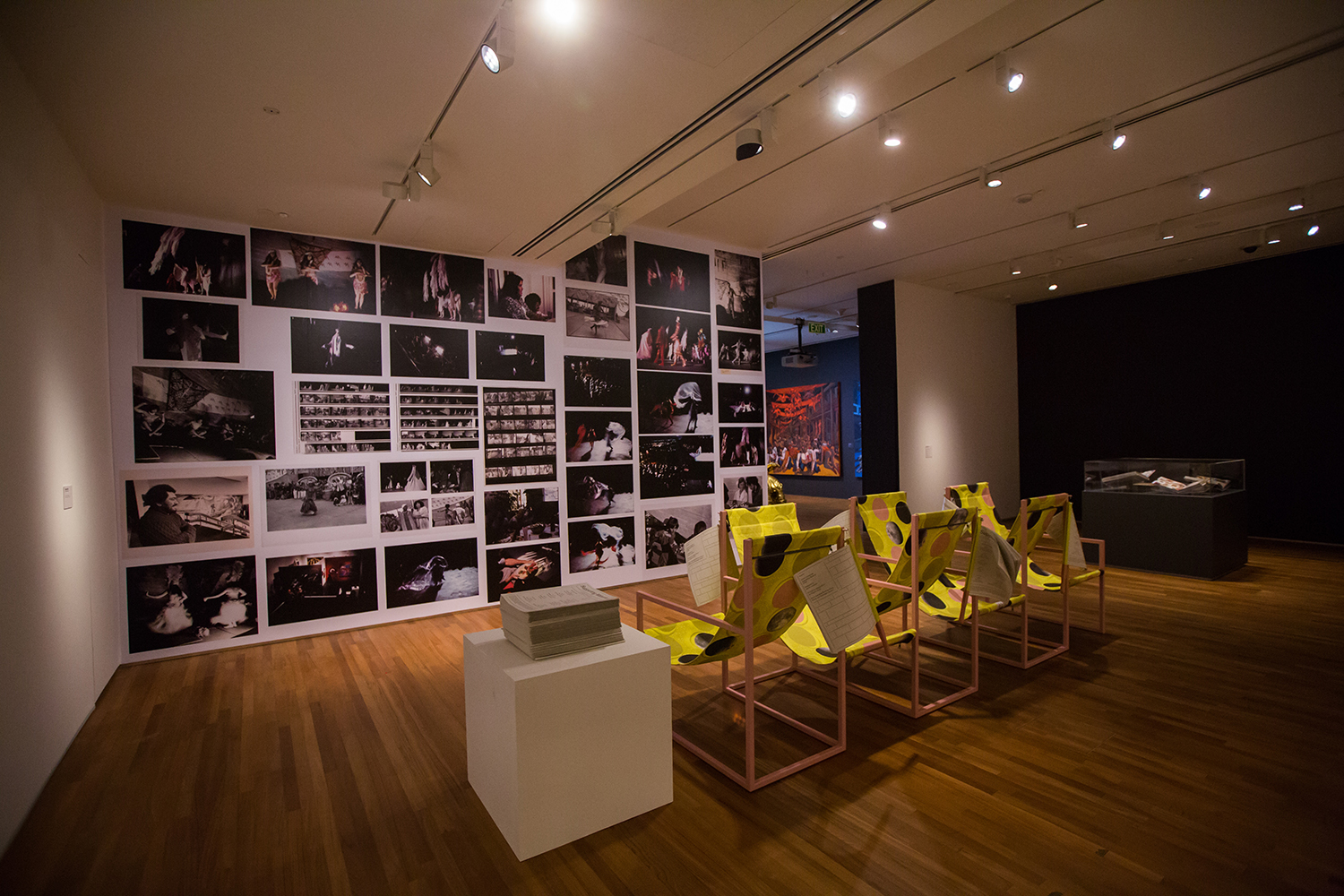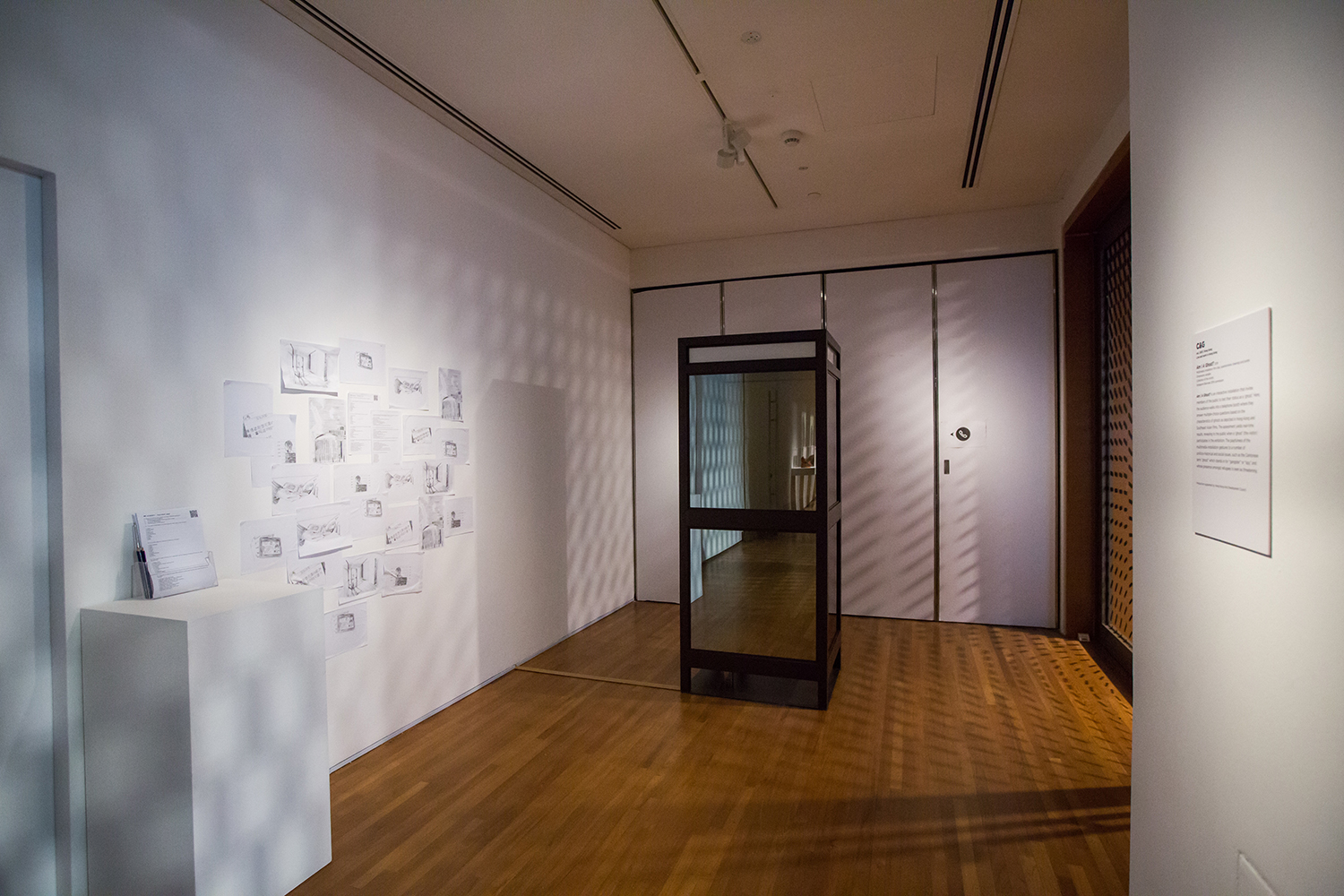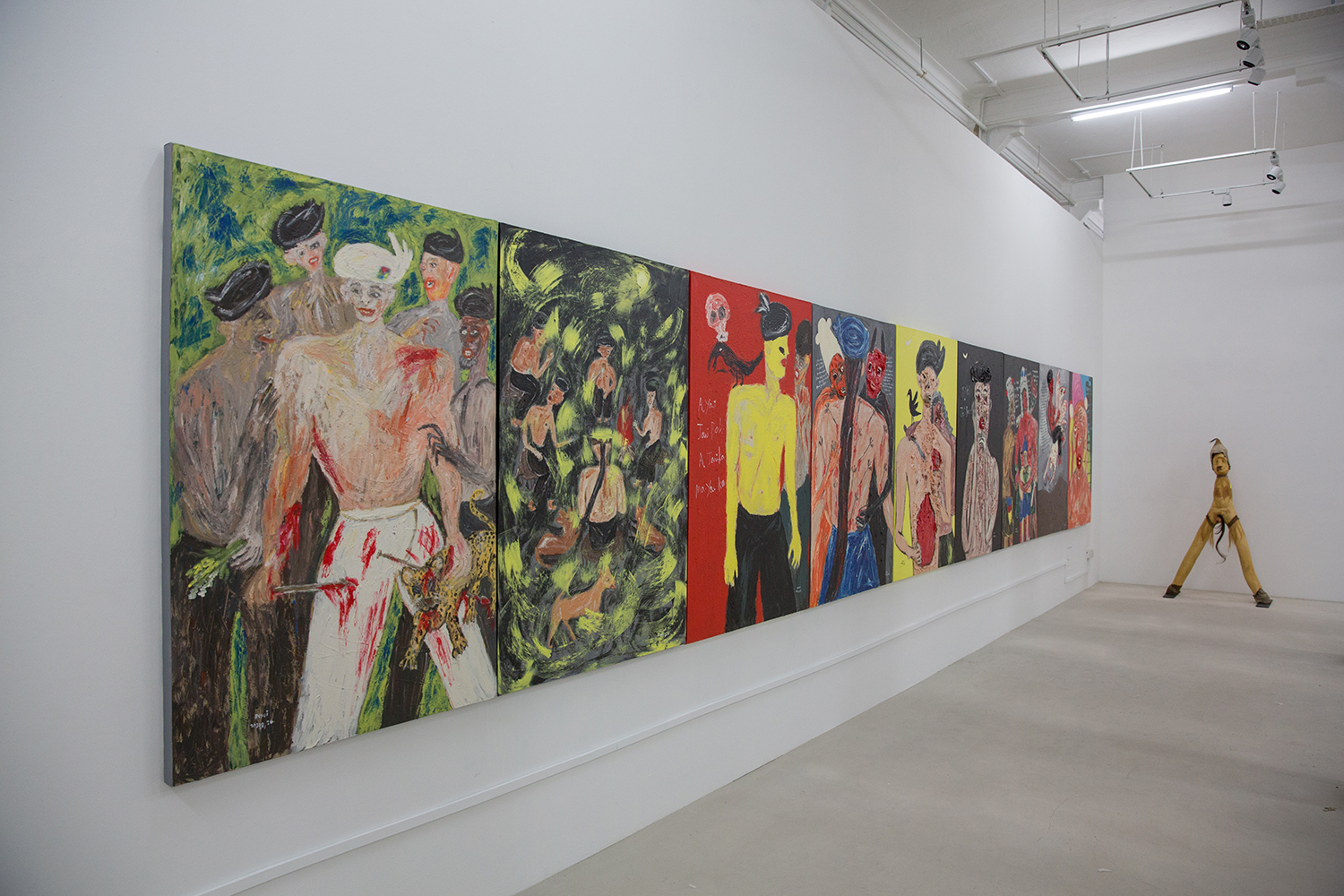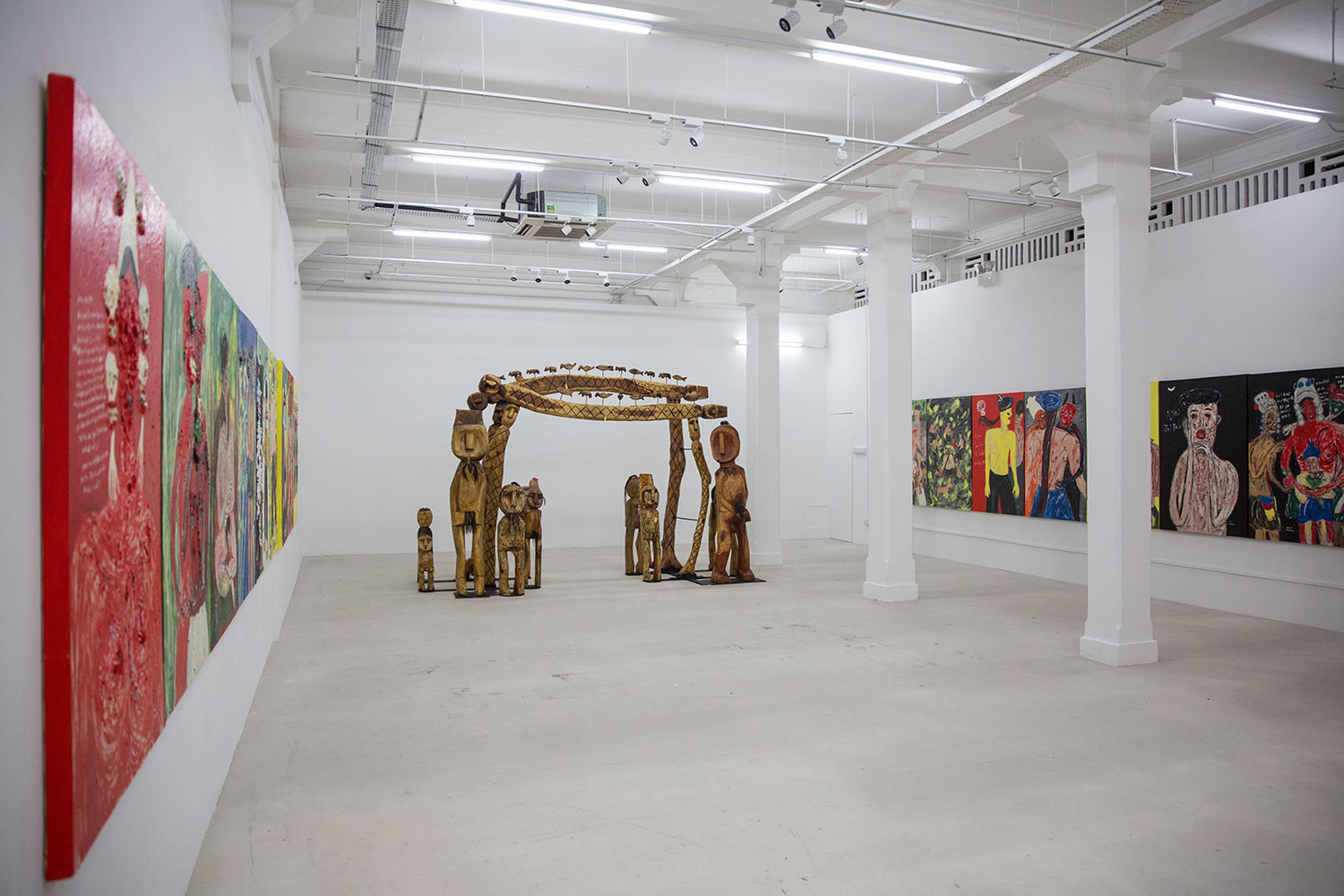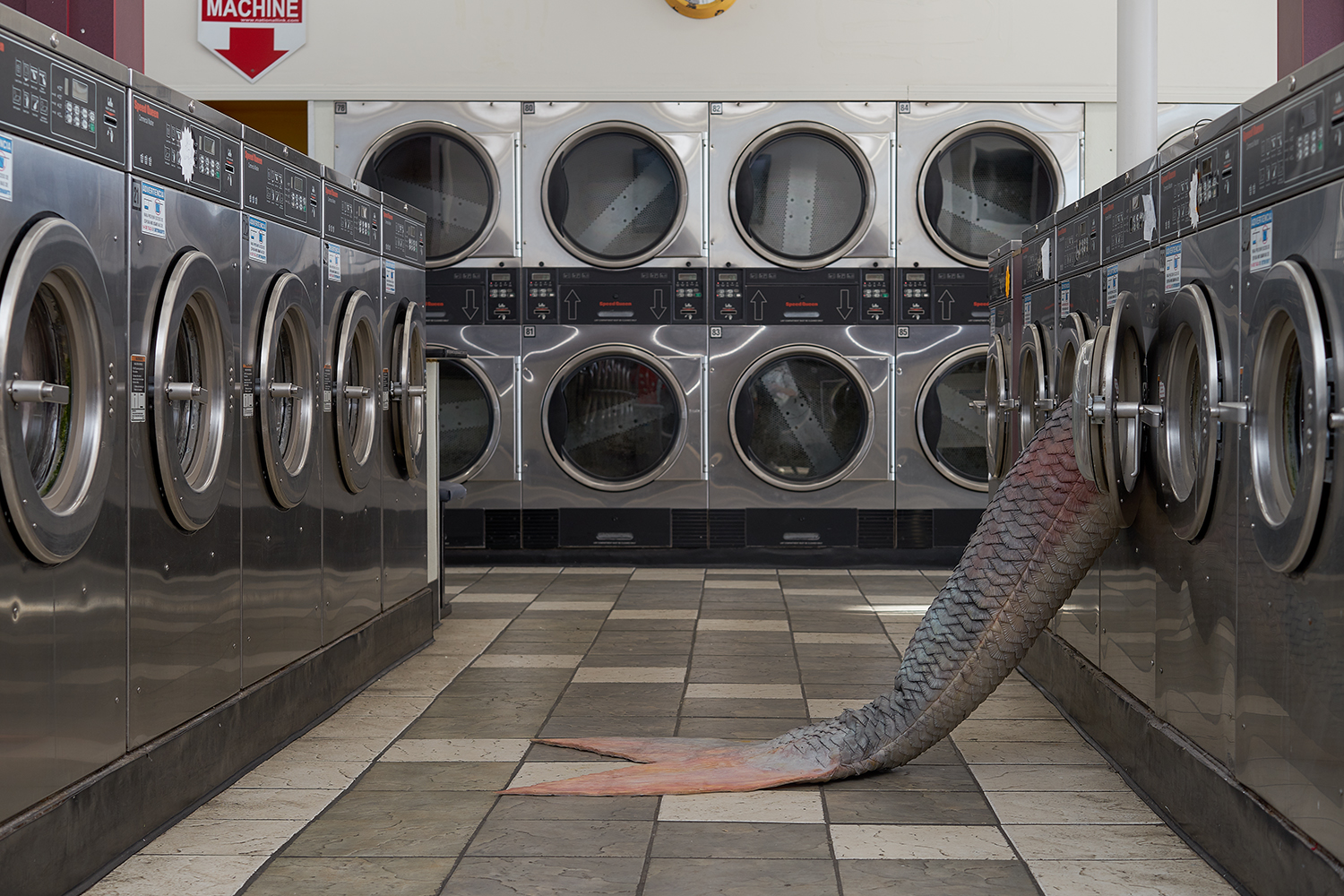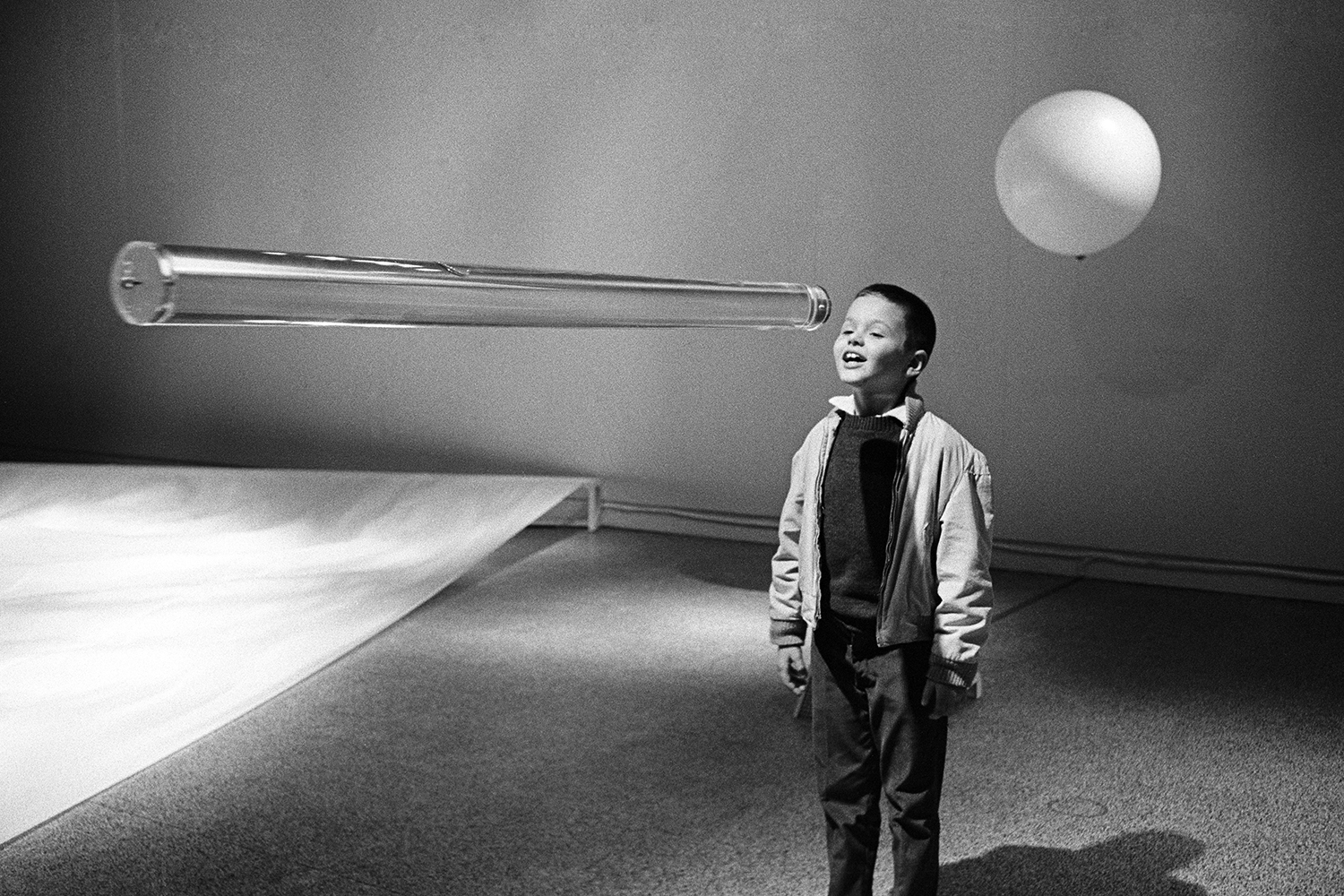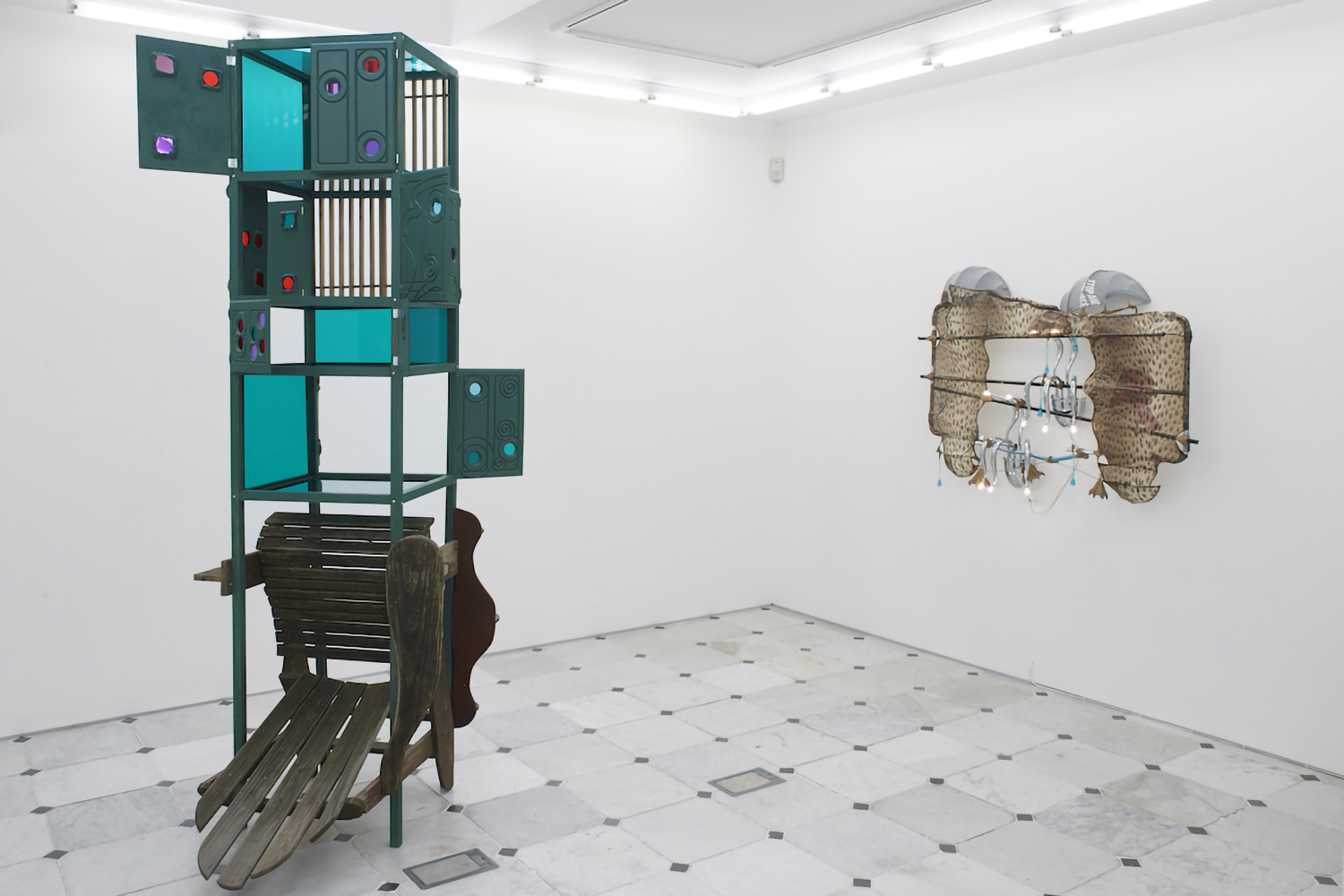The French philosopher Jacques Rancière calls it the encounter. One could also call it the invitation. The idea is to appropriate social forms as a means of bringing art closer to everyday life. At the Singapore Biennale, Céline Condorelli’s works invite the visitor to take a document from a slew of archival materials and to sit down and read it. A little further along, C&G invites us to test our status as a “ghost” and to walk into a telephone booth to answer questions based on ghosts as depicted in Asian films. Parallel to these transformations in the exhibition space are many forms of intervention in urban space: a garden pavilion holding hundreds of pieces of capiz (windowpane oyster shell) functions as a massive wind chime (Lani Maestro); commonplace conversations filling a thirty-five-meter-long hoarding take language beyond words so that it becomes immersive and experiential (Pooja Nansi); an invitation to walk with others generates reflections and perspectives (Amanda Heng).
Artistic director Patrick Flores and his team of curators have laid out a participatory exhibition that showcases the explorations of Southeast Asian artists, including those from Singapore. Biennale activities and venues are split between eleven sites across Singapore, thereby encouraging locals and tourists to commute from the National Gallery Singapore to Gillman Barracks, from LASALLE College of the Arts to Esplanade – Theatres on the Bay in constant motion. Titled “Every Step in the Right Direction,” the Biennale invites viewers to engage in dialogue and to deliberate about what the right direction might be. Who are we and what do we represent? Who am I and what do I represent? How might Southeast Asia reimagine itself or reconsider its history?
Throughout the state-funded project, forms of otherness emerge from differences in subjectivity, race, class, and geographic location. Notable works include titre provisoire’s bold and probing film installation Between spins, stops and change of directions (2019), Vanghoua Anthony Vue’s mixed-media and photographic installation Present-past-patterns(2019), and the haunting Funeral (2018) by Vandy Rattana. In Letter to the Sea (2019), Lim Sokchanlina reads a letter, addressed to Khmer migrants involved in Thailand’s fishing slave trade, while underwater on the maritime border between Cambodia and Thailand. In Survey of Works (1967–2006), Carlos Villa uses feathers, bones, aluminum, and other materials to create paintings, sculptures, installations, and video informed by his own complex and hybrid worldview as a second-generation Filipino American. War and Humans (2019) is a series of murals by Haifa Subay about victims of domestic violence and casualties of landmines; Nishan II (2019), a video installation by Desire Machine Collective, is about Kashmir and the trauma that never ends; and Le Quang Ha’s Guided Age (2018) is a disturbing critique of the horrors of authoritarian regimes in Nazi Germany, the Soviet Union, and Vietnam. Each of these works implore peace and unity for the people.
Painting, though dwarfed by installation and video, stands out. Mathias Kauage’s painting Marbles (1989) and his Untitled Drawings (1969), for example, are intensely powerful works in an expressionist vein; they reflect not only his fascination with contemporary everyday subject matter but also his use of whimsical color and simplified forms as a means of connecting to a larger, modernist vision. In sculpture too, from the organic earthenware forms of Temsuyanger Longkumer’s Parallel Communes (2017–ongoing) to Kahlil Robert Irving’s Many Grounds (Many Myths) (2019), we are made aware that the politics of the body — sexed, gendered, raced, or oriented relative to class and nationality — are also enmeshed in the politics of ecology. These works, among others, speak to the Biennale’s credo: namely, that to be critically engaged — and to give a voice to the figure of the multitude — is a force for good.

